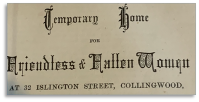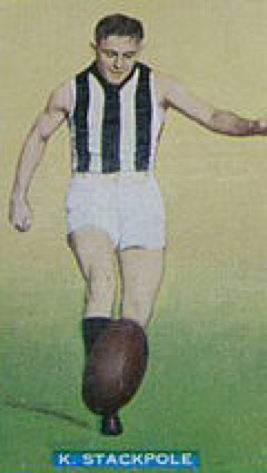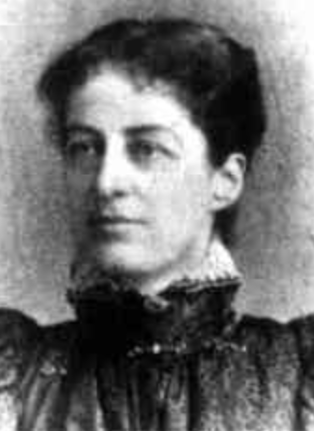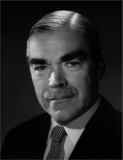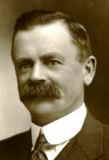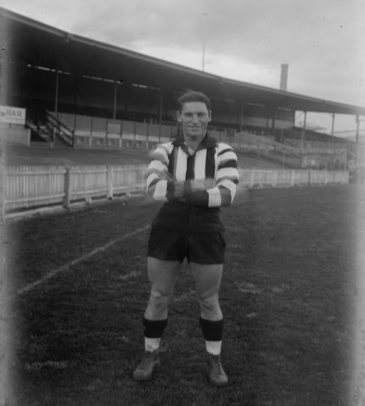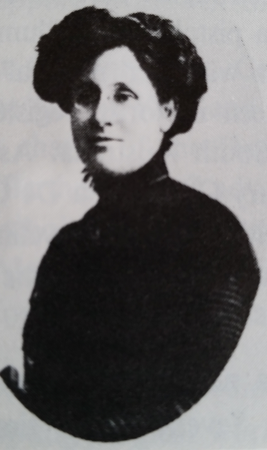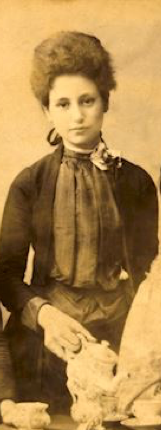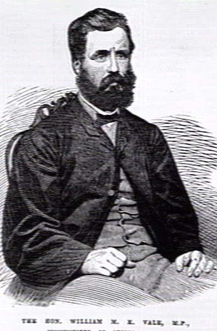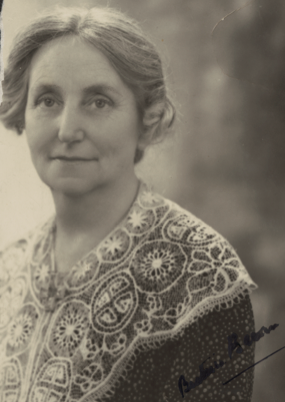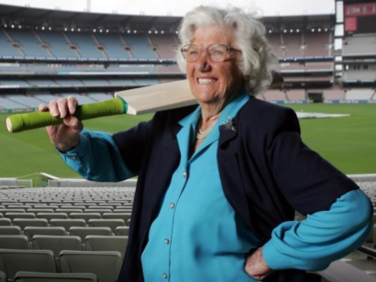Collingwood Notables Database
Royston Siddons
1899-1976
Manufacturer, founder of Siddons Industries Ltd and Sidchrome Spanners
Royston Siddons was the founder of Siddons Industries and the creator of the Sidchrome Spanner which became a household name throughout Australia after a successful advertising campaign with the catchy slogan ‘Ye canna hand a man a grander spanner’. An electrical engineer, Siddons was a remarkable innovator with strong Methodist principles that shaped his life.
James Simpson
1792?-1857
Early settler, magistrate, public servant
Simpson arrived in Van Diemen’s Land from England in 1825. He held various appointments there but eventually decided that joining the Port Phillip Association offered better prospects and sailed for Melbourne in 1836. He initially held pastoral leases near Werribee but with his abilities was soon appointed a magistrate and in 1840 a police magistrate. He was to hold a series of official positions in the ensuing years.
Elizabeth Wilhelmina Skiddy
c. 1827-1911
Matron
Elizabeth Skiddy was matron of Dr John Singleton’s Retreat for Friendless and Fallen Women in Islington Street, Collingwood for an impressive stretch of 25 years. Here girls and women could stay for up to three months and were taught washing, ironing, housework, needlework and other household tasks, to give them skills for employment. The live-in matron or sub-matron was expected to be with the women continually.
James Smith
1820-1910
Journalist, art critic, theatre critic, Parliamentary Librarian, early settler
Born in Kent, Smith arrived in Melbourne in 1854 and took a post with The Age as leader-writer and dramatic critic, and before long also took up a similar position with The Argus, adding the roles of art and theatre critic. He was very well-read, a prolific writer, and in great demand as a popular lecturer; from 1863-69 he was also employed as the Parliamentary Librarian. His personal library was extensive and valuable. In 1859 he moved to Yarra Grange in Abbotsford where he was to live for thirteen years.
Keith William Stackpole
1916-1992
Cricketer, footballer
Keith Stackpole senior was a talented sportsman who played both cricket and football at an elite level, and wherever he played he always called Collingwood home. After the Second World War he played 20 cricket matches for Victoria making 1025 runs at an average of 34.16. As captain of the Collingwood District Club he was always ready to nurture young talented players. His son, also Keith, went on to play Test cricket for Australia but always maintained his father was the better player. They played together for the Collingwood club just once. It was the father's last match, the son's first. Stackpole senior was a magnificent player of spin bowling. Former Australian spin bowler, Lindsay Kline, always said the best players of spin he bowled to were the legendary Neil Harvey and Keith senior.
Constance Stone
1856 - 1902
Medical pioneer, doctor, founder Queen Victoria Hospital, suffragist
Dr Constance Stone was the first woman doctor to be registered in Australia, after being forced to gain her qualifications overseas. She worked for five years at Dr Singleton’s Dispensary in Wellington Street, Collingwood, formed the Victorian Medical Women’s Society, and founded the Queen Victoria Hospital for Women and Children. She is an inspiring example of a woman determined to fight for her rights and overcome all odds in her determination to make available holistic medical service for all women, especially the poor.
Charles Robert Swift
1835-1870
Publican, councillor
Swift was a young solicitor's clerk living in Harmsworth Street when he married Ann, the daughter of Richard Norton, the publican at the Willow Tree Hotel. Maybe the hotel was his 'local' as it was very close to his house. Swift had arrived in Australia in the early 1850s, having previously worked as a solicitor's clerk in London.
James McAlpine Tait
1828-1911
Newspaper editor and owner, compositor, gold miner, Protectionist
James McAlpine Tait, as owner and editor of the Collingwood Advertiser and Observer, could be described as the most powerful and resonant voice of early Collingwood. Many locals considered him the ‘Voice of Collingwood’. He was forthright in his views until his death, aged 83, in December 1911.
Benjamin William Tapner
1861-1930
Architect, councillor, Mayor, honorary magistrate
Collingwood-born Benjamin William Tapner was an active participant in the Abbotsford and Clifton Hill community as an architect, member of the congregations of St Philip’s and St Andrew’s churches, and Mayor and councillor. Having earlier lost his son in the Great War, he also designed the Soldiers Memorial Hall, (named on completion the Returned Soldiers and Sailors Hall), which still stands in Hoddle Street. His photograph, in mayoral robes, hangs in the Collingwood Town Hall.
Marcus Tartakover
c. 1804-1882
Pawnbroker
Marcus and his son Samson conducted a pawnbrokers’ business in Smith Street. It has claims to be one of the longest-running businesses in the shopping street, since it apparently existed from 1858 until the mid twenties. Marcus was an Austrian-born Jew and married his French wife in Paris, where he was occupied as either a pawnbroker or jeweller.
Leonard Terry
1825-1884
Architect
Terry was one of Melbourne’s notable nineteenth century architects and left Victoria an outstanding legacy of banks and ecclesiastical buildings. He spent the last years of his life at Campbellfield near the Yarra, which he rented from local manufacturer Henry ‘Soapy’ Walker.
Ella Tolhurst
1877-1967
Teacher
Ella Tolhurst was the youngest daughter of Henry Tolhurst, an architect who was the surveyor and engineer for the City of Collingwood. The family moved into Clarke Street Abbotsford in the 1880s. Living in a substantial house with a tennis court, the four daughters were well occupied with home duties and social engagements among their many connections in the district, while the two surviving sons pursued careers in the law and surveying. Ella, however, broke away from the life lived by her three elder sisters to forge a professional career.
Henry Edmeades Tolhurst
1837-1902
Architect, engineer, surveyor
Henry E Tolhurst was an architect who was appointed Collingwood city surveyor and engineer in 1883. Tolhurst continued his practice as an architect while working for the council and was responsible for some notable Collingwood buildings. These included the east aisle of St Joseph’s Church in Otter Street, and the Shamrock Brewery in Victoria Street, a bi-chrome brick building, since demolished, whose striking appearance probably once rivalled the Yorkshire Brewery. A somewhat plainer building, but typical of Collingwood industry, was Whybrow’s shoe factory in Stafford Street.
Charles Henry Tolhurst
1864-1924
Solicitor
Charles was one of the sons of Henry E Tolhurst, Collingwood city surveyor and engineer. The family lived in Frankfurt House, a two-storey bluestone house in Clarke St with a tennis court and large garden. By 1888 Charles was regularly advertising his Queen Street practice in partnership with McFarlane in the local paper. This was the same year he was initiated into the Masonic Earl of Carnarvon Lodge. In 1896 the firm became Tolhurst and Druce (which still exists in 2016 under the name Tolhurst Druce and Emerson).
Ivor Withall Trescowthick
1906-1998
Shoe manufacturer, founder of Julius Marlow
When Collingwood was the capital of Australia’s footwear industry, the Trescowthick family were a prominent part of the local trade. Ivor Trescowthick was the nephew of the prominent boot manufacturer, Charles Trescowthick. Ivor started his own shoe factory, not far from his uncle’s, in 1928 and later started the Julius Marlow brand, still sold today.
Charles Trescowthick
1868-1946
Boot and shoe manufacturer
When Charles Trescowthick died at the age of 79 he was referred to as the ‘oldest boot and shoe manufacturer in the state’. Son of Cornish migrants, Trescowthick was born in Ballarat East. He moved to Melbourne and in 1883 began his apprenticeship with James and McGan in George Street, Fitzroy. He soon set up his own business and was actively engaged in boot manufacturing until the time of his death.
Charlie Utting
1923-2009
Footballer, councillor, mayor
Charlie Utting was a nuggety and feisty footballer with relentless determination, courage, resilience and unflinching toughness who made life very difficult for opponents. He was a key contributor to Collingwood’s re-emergence as a VFL force in the years after 1943.
Grace Vale
1860-1933
Doctor, suffragist
Grace Vale was among the first group of women to study medicine at Melbourne University. An Abbotsford resident, she was a member of the prominent and talented Vale family. Grace was born in Richmond, the eldest daughter of William Mountford Kinsey Vale, stationer and later Member of Parliament, and Rachel Lennox. The family soon moved to Ballarat, returning to Melbourne in 1872 where Grace attended Gurner House School, St Kilda. The family spent the years 1874 to 1878 in London as Mr Vale had taken up an appointment there. Back in Melbourne, she studied with private tutor James Clezy to prepare for her Matriculation examinations while living in Church Street Abbotsford at Mayfield, the lovely house originally built for Georgiana McCrae, and bought by William Vale in 1886. The Vales were staunch Congregationalists and attended the Oxford Street Congregational Church.
May Vale
1862-1945
Artist, enameller, suffragist
May Vale was a talented artist and Abbotsford resident, daughter of the prominent Vale family. Her paintings include family members and an evocative small painting called The Orchard which depicts the blooming garden at their house Mayfield. The family was close-knit, with some of the children living together until death.
William Mountford Kinsey Vale
1833-1895
Bookseller, barrister, Member of Parliament, Protectionist
Vale was a defender of tariff protection, a keen advocate for technical education, a prominent member of the Independent or Congregational Church and a supporter of the temperance cause. In 1886 he bought Mayfield, the lovely house originally built to the design of Georgiana McCrae in the 1840s, and after her departure the residence of Sir Francis Murphy. Here he spent the last ten years of his life surrounded by his clever and talented daughters and son William who followed him into the law. According to Alfred Deakin, he was ‘strong in domestic affections’ and the closeness of the family is indicated through their frequent appearances together at social, community and church events, and their house sharing in adult life.
Beatrice Vale
1876-1945
Poet, missionary in China
Beatrice was one of the five talented daughters of William Vale, Member of Parliament, and his wife Rachel. In the 1880s the family moved into Mayfield in Abbotsford. In this lovely old house May and Elsie painted and gave art lessons, Grace studied for a medical career, and Faith started a school. Beatrice, who attended Presbyterian Ladies College, also showed artistic gifts and studied at the National Gallery School, but would eventually find her metier in writing poetry, prose and plays. The family was close-knit; a delightful photo of the five sisters taken in Allen’s Smith Street Collingwood studio conveys an impression of quiet strength, intellect, and moral purpose.
Frederick Henry Warming
1827-19
Publican, Land Sale Agent
Frederick Warming’s Clifton Hill Hotel remains a Queens Parade landmark commemorating this man of many talents. Warming’s life encompassed working in various locations and different occupations including as an accountant in London, as a mounted policeman in South Australia and Victoria and as a coach owner in northern Victoria in addition to his local roles as publican and land sales agent.
Richard Henry Way
1816-1883
Solicitor, landowner, subdivider
Richard Henry Way was a Sydney solicitor who purchased a large Collingwood landholding in Portion 74 from the original owner, David Chambers, who had obtained the land from the Crown in 1839. Despite never living in Collingwood, or indeed in Victoria, Way left a lasting influence on the street layout and block sizes of the area bounded by Hoddle, Johnston, Dight and Vere Streets and thus including Campbell, Palmer, Harmsworth, Francis, Sydney and Perry Streets. Harmsworth was his mother’s maiden name and three of his sons were named Francis, Sydney and Harmsworth.
Arthur Whybrow
1862-1944
Boot and shoe manufacturer
Arthur Whybrow built up one of the largest boot and shoe manufacturing businesses in Australia, and became not only a spokesman for the boot industry, but also an active community member. He was a member of the Collingwood Technical School Council and a Board member for the Alfred Hospital. The large Whybrow factory at 200 Hoddle St Abbotsford remains a prominent landmark.

